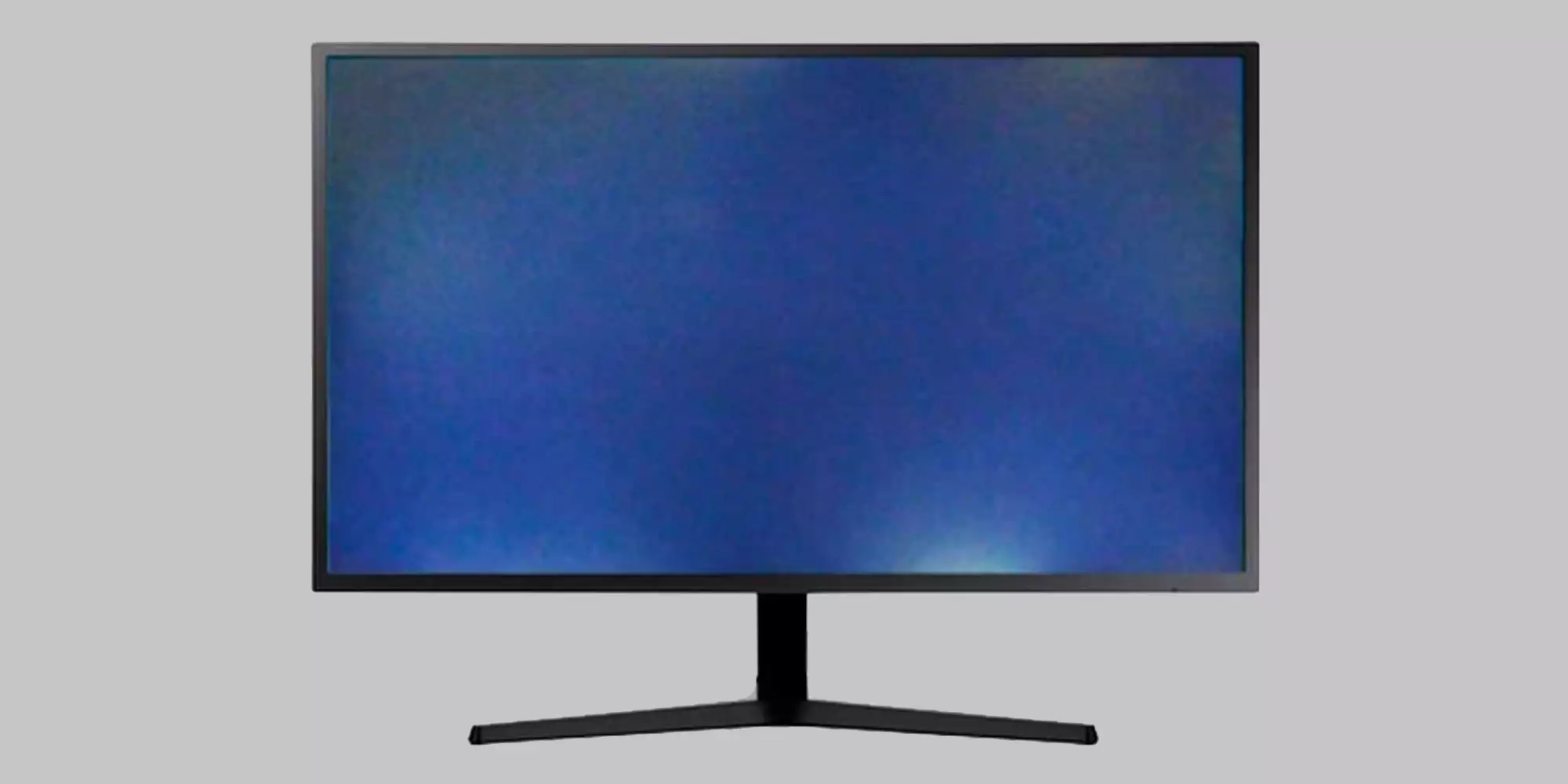When light from a monitor’s active backlight system escapes around the edges of the screen, causing areas of uneven brightness, it is known as backlight bleed. While there’s no remedy for backlight bleed, you can avoid it in the first place.
If you ever noticed bright spots on the edges of your monitor, you know they can be annoying to deal with, when you need your colors and graphics to look accurate.
Bright spots and bleed can cause color imbalance, which can have a significant impact on color output in programs such as Photoshop.
So is backlight bleeding normal?
Backlight bleeding is a common problem with many monitors, but it doesn’t mean you have to continue to live with it.
Find out more about backlight bleed and what you can do to alleviate the issue.
How much backlight bleed is normal?
A small degree of backlight bleeding is inevitable on most monitors that use an active backlight system for their visual display.
If you only use your computer for basic activities such as checking your email, typing in a spreadsheet, or even watching videos, then a small amount of bleeding isn’t going to be noticeable.
If your screen appears uneven in brightness around the edges, if it looks cloudy, or if you need to work with dark visuals for more extended periods, then bleeding can be a serious issue.
If you suspect the monitor is defective or otherwise has backlight bleeding, then your best course of action is to test it with a specific process.
How to test for backlight bleed
Testing for backlight bleeding is a simple process that takes a few minutes. Follow our step-by-step instructions and double-check that you are using the monitor you want to test.
- Ensure you are in a dark room with your monitor setup with your desired brightness settings.
- Start the test by visiting this website: lightbleedtest.com
- Take a moment to click on the links of examples of bleeding for different devices, including monitors.
- Click on this first “Click Here” link or press Enter while on the page. Your screen will change to a fullscreen, all-black background.
- Examine your screen for bright spots. Pay close attention to the corners and edges.
If your monitor is experiencing backlight bleeding, check out our options below for ways to address the problem.
What are the types of backlight bleed?
There are two types of backlight bleed which are differentiated based on how they appear on the screen.
Let’s look at the types of backlight bleed and how to identify them to know what kind of defect your display is experiencing.
Clouding
Clouding is a type of light bleeding which affects the entire screen. Clouding appears as an irregular or splotchy pattern of bright spots (hence the name).
Clouding is more prevalent on larger monitors.
A clouding effect can also be more noticeable on new monitors, but it often fades the more you use the monitor.
Flash Lighting
When your monitor has bright spots which appear to originate in the corners, or maybe the edges of the screen, this is called flash lighting.
The appearance is similar to someone shining a bright flashlight from behind the corner of your monitor.
Flash lighting can affect larger or smaller displays and is often the result of a defect in manufacturing or poor handling during transportation.
Backlight bleed vs IPS glow: What’s the difference?
While backlight bleed is a common enough problem with monitors, it is not always the cause of the apparent glow on your screen.
Backlight bleed is sometimes confused with IPS glow.
Backlight Bleed
Backlight bleed is the effect of light shining through from the back of your monitor, and it is considered a flaw (often caused by over-tightened screws).
You will often see backlight bleeding in cheaper monitors built from lower quality parts or monitors manufactured with less stringent quality standards.
It can be severe or mild, and if it is impacting your ability to use your monitor in the way you want to, then you should check out our guide below for issues on how to address the bleeding.
IPS Glow
An IPS glow is often misidentified as backlight bleeding because it produces a similar effect with bright areas around the corners of your monitor.
Unlike backlight bleeding, an IPS glow is an effect produced by the way the technology works and is not a defect in the display.
One way to differentiate the two is an IPS glow will appear in the corners of the screen, while backlight bleeding can occur along the entire edge.
Also, backlight bleeding does not differ in intensity if you look at it from different points of view, while an IPS glow will change with different viewing angles.
Options to consider
You can try a few options, such as attempting to fix the backlight bleeding on the monitor. Still, it is often better and easier to get a return merchandise authorization (RMA) from the seller or just to buy a new monitor.
RMA
An RMA is a process many companies offer for their customers who have purchased a defective or malfunctioning product and now wish to return it.
To get an RMA, you will need to contact the technical support department of the company you purchased your monitor from.
They will work with you to decide if you want to have your monitor repaired, have it replaced, or if you should receive a refund, they will provide you with an RMA number.
You will then package your monitor for shipment and write the RMA number on the outside of the package.
Make sure you package the monitor so it is not damaged during shipment, as any damage can cause your return/replacement to become denied.
Try to fix the backlight bleed
Attempting to fix backlight bleeding on a defective monitor is not always successful, but in some cases, it can be the easiest and cheapest solution. Follow along with these step by step instructions to try to fix your monitor:
- Before working with your monitor, make sure it is turned off and disconnected from the power cord. Give the monitor time to cool if it is warm.
- Locate the screws along the outside of the back of your monitor, which connect the monitor panel. Often these screws are over-tightened during manufacturing which causes backlight bleeding.
- Loosen the screws by one half-turn, counterclockwise.
- Give the monitor frame a gentle twist to allow the panel to resettle.
- Turn your monitor back on and re-test it to see if it is still experiencing backlight bleeding.
- If there is still a backlight bleed, take a microfiber cloth and wipe the bleeding areas in gentle, circular motions.
- If there is still a backlight bleed, leave your monitor alone for 24 hours before rechecking it.
- Repeat this process and check if your monitor’s backlight bleeding has faded.
Buy a new monitor
When all else fails, buying a new monitor is a good option.
However, buying a new monitor can be a hit-or-miss scenario though, as you risk the possibility of having the same issues repeated with a different device or even having to re-purchase multiple times before finding a monitor with minimal bleed problems.
If you are going to purchase a new monitor, try to find one with a good track record for quality and performance.
A good option for a reduced amount of backlight bleed is the 27-inch Dell S2722QC monitor.
FAQ
Questions about backlight bleed? We have the answers.
Yes, in some cases, a monitor can show worse and worse backlight bleed effects over time.
You can retry the steps we outlined above to fix the backlight bleed problem, but in many cases, the bleed is not an easy fix, and you should consider using one of the options we’ve provided to address the problem.
Yes and no, depending on the severity of the bleed and what types of visuals you are looking at, backlight bleed can affect image quality.
Backlight bleed affects the edges of the screen the most, and the darker your screen, the more noticeable the effect will be.
It can become challenging to do certain tasks such as calibrating colors or editing images.
Yes, often, if the issue is related to pressure, then loosening the screws will help cause the effect to go away.
Some new monitors also experience backlight bleed, and it will fade on its own with time and usage.
Backlight bleeding is a defect in a monitor which allows light to escape around the edges of the screen.
This happens when the liquid crystal alignments in the panels behind the screen are misaligned because of over-tightened screws, poor manufacturing processes, damage during shipping, or a similar issue.


